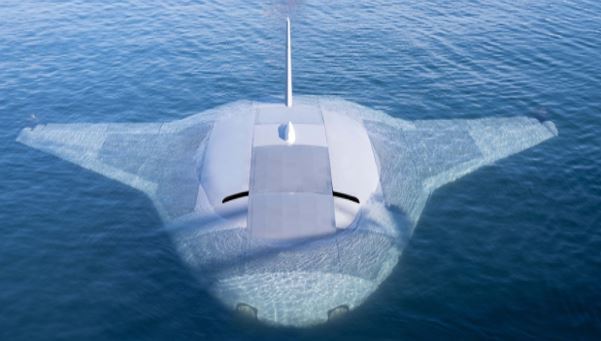Underwater Drone: What are the UUVs? New Frontier in Modern Naval Warfare
Underwater Drone or technically known as “Unmanned underwater vehicles (UUVs)” are the newly emerged powerful tools, playing role in various applications like marine exploration or naval warfare. It acts as a critical force multiplier in the field of use and when it comes to the domain of defense & brings with it a scope of powerful transformation in military strategy.
In this blog, let us explore what the underwater drones are, how underwater drones function & their growing significance in the world of defense.
What is an Underwater Drone?
Underwater Drones or UUVs are the robotic devices which are designed to operate in the under-water environment, autonomously or remotely, without any occupant. They can be designed, manufactured in various dimensions and integrated with complex capabilities, advanced systems and customized weapons for missions impossible which cannot be executed by human force.

Key Features of Underwater Drones:
The key features of UUVs include autonomy, making the underwater drones dangerous for any opponent because they can be customized to operate using artificial intelligence to execute navy missions with minimal or zero human control. They can be fitted with spy cameras, sensitive sensors, and customized arms. The results are vast, making them versatile for hybrid usage, both for defense and civilian purposes.
Types of Underwater Drones & Uses:

ROVs (Remotely Operated Vehicles)
These are hitched to a control station by a cable, allowing operators to control them in real-time. ROVs are commonly used for inspection, maintenance, and exploration tasks, providing live video feeds and sensor data.
AUVs (Autonomous Underwater Vehicles)
Unlike ROVs, AUVs operate without any tether and are pre-programmed or operate by use of artificial intelligence to execute critical missions autonomously. They are used for mapping, surveillance, and scientific research or armed attacks, capable of navigating complex underwater environments.
Hybrid UUVs
These combine the features of both ROVs and AUVs, capable of switching between autonomous and remote operation modes. Hybrid UUVs offer flexibility and can adapt to a wide range of missions either for research, search & rescues or battle attacks in the seas.
Critical Use in Naval Warfare, as a force multiplier in Wars in the Seas
- Stealth, Surveillance & Reconnaissance
- Mine Countermeasures
- Anti-Submarine Warfare (ASW) Missions
- Cost effective attack on large navy fleet
Stealth, Surveillance & Reconnaissance
Underwater Unmanned Vehicles can gather intelligence silently in the sea with high resolution video feeds. They are potent devices to watch enemy fleet, under water mines, submarine threats. They operate undetected making them extremely useful asset to gather intelligence & assist in surveillance, reconnaissance and covert military operations.
USA deploys underwater drones in sensitive regions in the seas, within the rules of international navigation & overflight for stealth, surveillance & Reconnaissance. In 2016, China recovered a USA deployed Sea drone in South China Sea, causing tensions in USA-China relations, later returned to US Navy, after necessary diplomatic consultations.

Mine Countermeasures
Equipped with Sonar, underwater drones are best alternative to traditional mine clearing operations. UUVs detect & neutralize the mines in the battle sea. The advanced sensors are capable to differentiate between natural underwater structures and a mine, making them full proof and lifesaving device in a military navigation.
Anti-Submarine Warfare (ASW) Missions
Underwater drones can stay submerged, silent for long duration in the sea, can track and monitor enemy submarines, providing real-time data to naval forces. By use of on-board sensors, it can help building underwater surveillance network.
Cost effective attack on large navy fleet
For a smaller Navy or a Navy Suppressed by a large enemy fleet, Underwater drones can play a profound role. A group of underwater drones including decoys can inflict severe loss on a large & powerful enemy navy fleet.
World has seen how Ukraine created a grain corridor on the face of a powerful Russian Navy in the black sea, even with absence of a proper navy of their own. When Russia threatened shipping of grains from Ukraine to other parts in Europe, Ukraine boldly declared a “Black Sea humanitarian corridor” and several ships of Russian black sea fleet were destroyed by use of maritime drones. As a result, Ukraine was able to ship Ukrainian Products valued 1.9 billion USD.

Use of Underwater Drones in Research
Apart from military applications, underwater drones are also precious for environmental monitoring and scientific research. They can collect data on oceanographic conditions, marine life, and underwater ecosystems, supplementing to our understanding of the marine environment. This versatile capability highlights the versatility of underwater drones and their potential for non-military roles as well.
Inference:
As technology continues to advance, the role of underwater drones in naval battles will undoubtedly grow, shaping the future of naval security and defense.
The annexation of underwater drones into naval operations represents a cost-effective transformation, guiding to new possibilities and capabilities that were previously not thought for. As more & more countries invest in and develop these cutting-edge technologies, underwater drones will play an increasingly central role in guarding the seas and balancing maritime dominance.
Photo credit of feature image Manta Ray (Autonomous Underwater Drone Capable of Variety of Missions): Northrop Grumman

Yes, it will be a big industry in the near term..
Future cheap but effective strike weapon